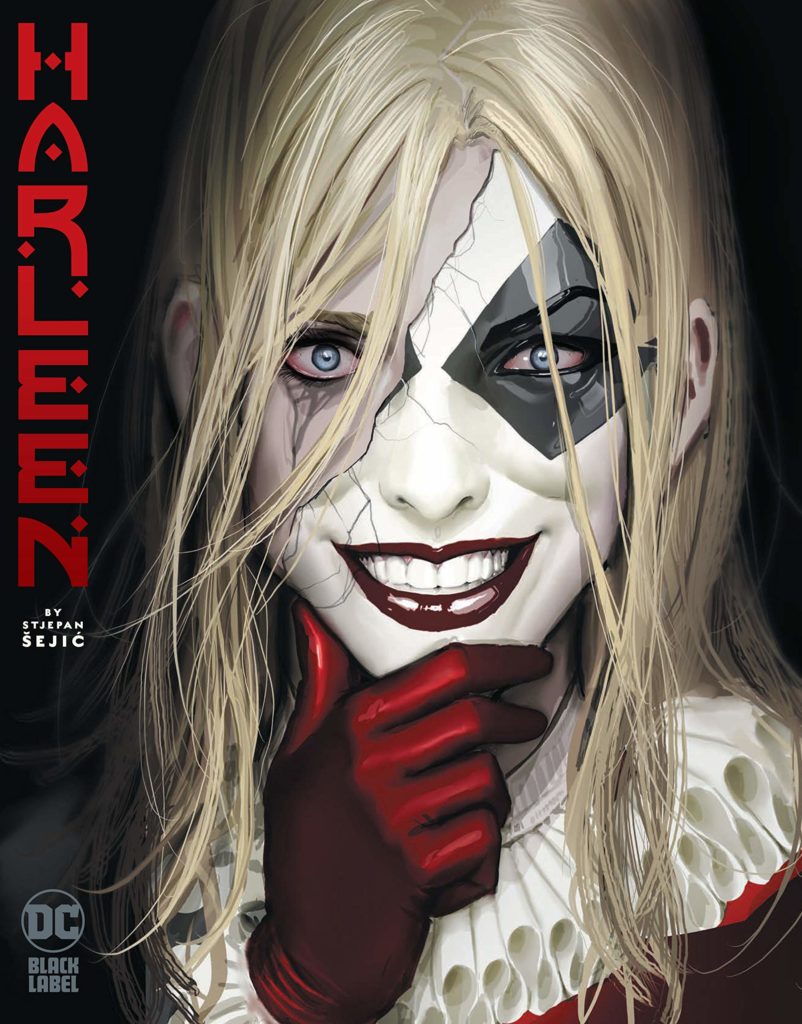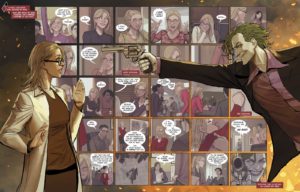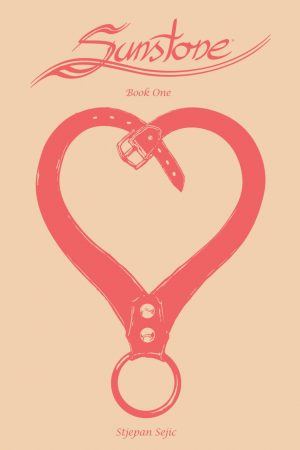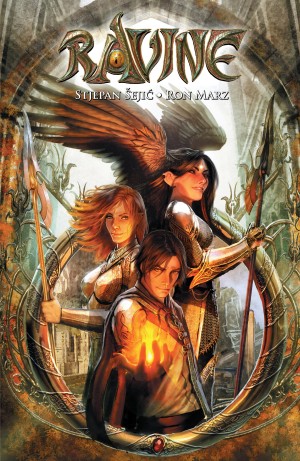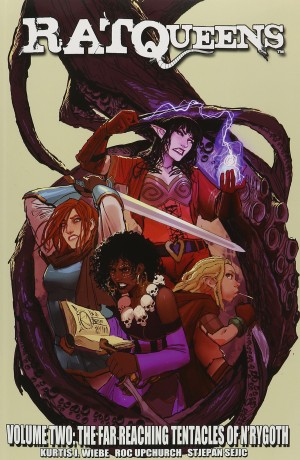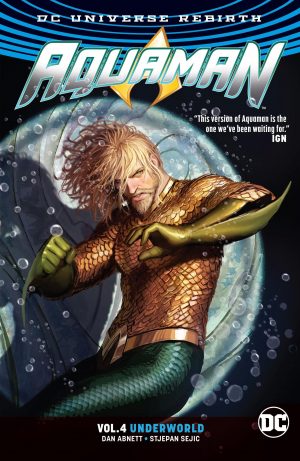Review by Ian Keogh
For years Harley Quinn hasn’t been that far removed from Deadpool, cracking wise as she survives impossible situations, only the occasional pining for the Joker really differentiating her. DC’s Black Label imprint isn’t the place for such frippery, though, and Stjepan Šejić’s brief is to provide a serious justification for the transformation of psychiatrist Harleen Quinzel into the madcap Harley. Given that her origin was just a brief narrative convenience to provide the Joker with an assistant in the Batman Animated series back in the 1990s, the more structure that’s applied the greater the possibility that it underlines the silliness. There are moments where that almost happens, but Šejić always catches himself, and so a convincing veneer of reality results.
Šejić begins with Harleen at thirty having a life defining moment. The sample spread shows her drift through life until putting the effort into earning her qualification, and even then she’s uncertain about what to do with it. That’s until she’s a close witness to the compulsive deadly ballet of Batman capturing the Joker. It awakens something within her, and in short succession she qualifies for a grant to study criminal madness and transfers to Arkham Asylum where there’s no shortage of candidates. Where Šejić’s version of Harley differs from earlier interpretations is the care taken to build an uncertain woman, and to surround her with people who largely resent her, either for her sudden relative success, or for her interference. Šejić also underplays the Joker. It’s only in the final pages of the opening chapter that Harley first meets him professionally, although by then he’s been a presence in her nightmares for some while. He’s charismatic, Šejić’s version almost a sane man with a dark sense of humour who uses insanity to perpetuate his career, and lies to staff at Arkham as a way of amusing himself. His view is that Gotham creates monsters, himself among them, but he’s comfortable with the definition.
Unlike most artists taking the obvious route, Šejić shines a light into the darkness, literally and metaphorically illuminating scenes as a continuing visual technique. It extends to Batman’s eyes being presented as piercing lights. The art is poised and elegant. Šejić’s Joker is slim, but not elongated, and his Harley not as short as in other incarnations, both helping in transmitting them as more credible people. Harley’s transformation is a protracted affair, a seductive Joker challenging her assumptions and prodding at insecurities over repeated interviews, prompting self-doubt. By the final chapter’s changes quite the erotic undercurrent has been developed.
While Harley and the Joker are the core personalities, others are seen, a cameo for Harley’s later friend Poison Ivy, and more space for Two-Face in a subplot that’s not a great fit. Something was needed to counterpoint the main plot’s slow release, but Harvey Dent’s capitulation to madness doesn’t work. That’s about the only aspect that fails, and Šejić has several good ideas about well trodden paths. That it should be Batman providing Harley’s final nudge is subtly played, and the finale is a new take on the familiar scenario of the lunatics taking over the asylum, vibrantly drawn and Two-Face finally justifying his use.
Harleen isn’t the Harley Quinn graphic novel you’re used to. It’s a lush slow burn instead of a headlong manic rush, and the costumed Harley only appears in a fantasy sequence and right at the end. An intelligent peeling back of a personality may not coincide with everyone’s view of what Harley should be, but buy into the premise and this is a quality analysis.
